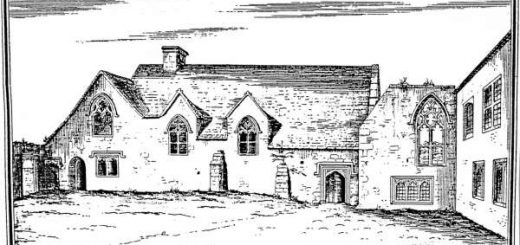Towneley Hall, Burnley
Although the Towneley family lived here since the 13th century, the present Grade I listed Towneley Hall dates from the 14th and 16th century. No longer a stately home, Towneley Hall houses Burnley’s Art Gallery & Museum and perhaps a few ghosts.
 The following article by Gill Johnson entitled ‘Tormented souls roam historic haunted Townley Hall’ appeared in the Lancashire Telegraph 7 July 2011:
The following article by Gill Johnson entitled ‘Tormented souls roam historic haunted Townley Hall’ appeared in the Lancashire Telegraph 7 July 2011:
TOWNELEY Hall, opened to the public since 1902, had previously been home to the Towneley family for 500 years.
Like any self-respecting hall in Lancashire, it has its ghosts, spirits of the past that are said to roam the hall and its grounds.
The most famous ghost there is the ‘white lady’ who wanders occasionally along the battlements high above the entrance.
Who she is, no-one knows — perhaps as in most traditions of this sort, she seeks out the high battlements looking out for a long lost lover who never returns.
Another lost soul is that of Sir John Towneley (1473-1541) who illegally enclosed some of the common lands around Whorlaw, near the Waggoner’s Inn in Manchester Road, depriving the local farmers and commoners of grazing land and making it into a hunting park.
The tormented spirit is doomed to roam the rooms of the hall forever, but only every seventh year.
Tradition says that the appearance of the ghost marked the forthcoming death of one of the Towneley family, and many people linked any sudden death to this legend.
‘Trash’ was also something to be feared, for this was a phantom dog the size of a small donkey which roamed the grounds at Towneley at certain times.
He was jet black with blazing red eyes the size of saucers, and it, too, is associated with death.
At the back of Towneley Hall is the old road which stretched between Bacup and Todmorden and is today part of the network of visitor pathways.
Part of it is named Boggart Bridge which spans a small stream.
Here lived a particularly objectionable boggart in times past, who demanded gifts from the travellers before they were allowed to cross.
Then, a compromise was reached, whereby the boggart could keep the soul of the first thing that crossed the bridge the following day and he would never again appear as long as there was greenery around.
Next day, local folk sent over an old hen which the boggart claimed and then, true to his word, disappeared leaving only behind the smell of brimstone and sulphur.
Evergreen shrubs were quickly planted and the disagreeable boggart has not been seen since.



Re: Towneley Hall, Burnley
‘Lancashire Folk-lore’ (1867) by John Harland and T. T. Wilkinson.
The mansion at Towneley does not escape the imputation of having its "Boggart," although its visits are now limited to once in seven years, when its thirst for vengeance has to be satisfied by the untimely death of one of the residents at the Hall. A Sir John Towneley is supposed to have injured the poor of the district, nearly four hundred years ago, by "laying-in" a considerable portion of common to his park, and, as a punishment for this offence, his soul is said to haunt the scenes of his oppression. The peasantry still aver "that the old knight’s spirit, being unable to rest, wanders about the mansion, and may be heard over the very parts taken in, crying, in most piteous tones—
"Be warned! Lay out! Be warned! Lay out!Around Hore-law and Hollin-hey clough: To her children give back the widow’s cot, For you and yours there is still enough."